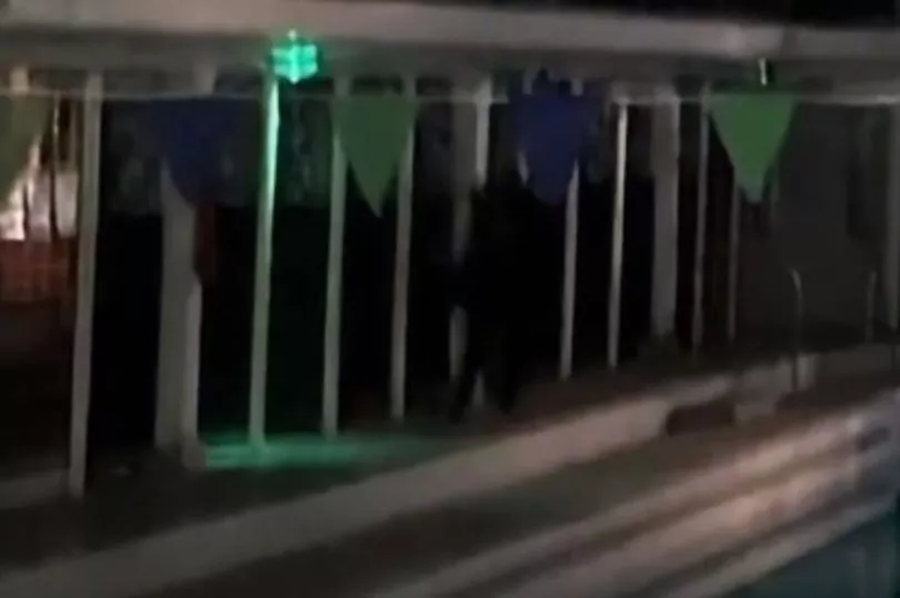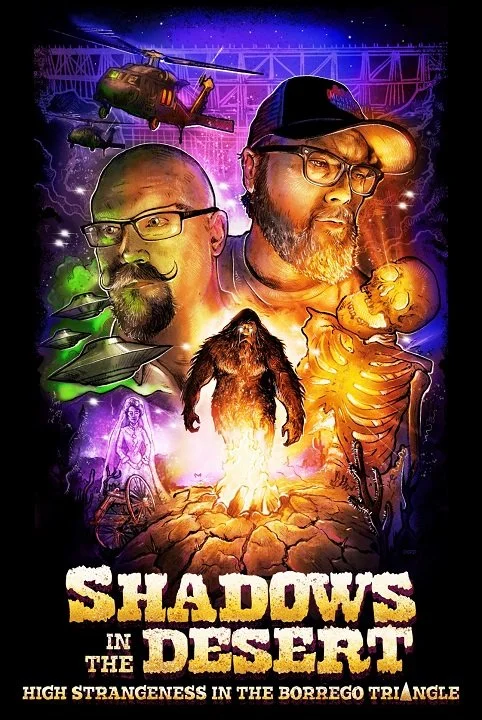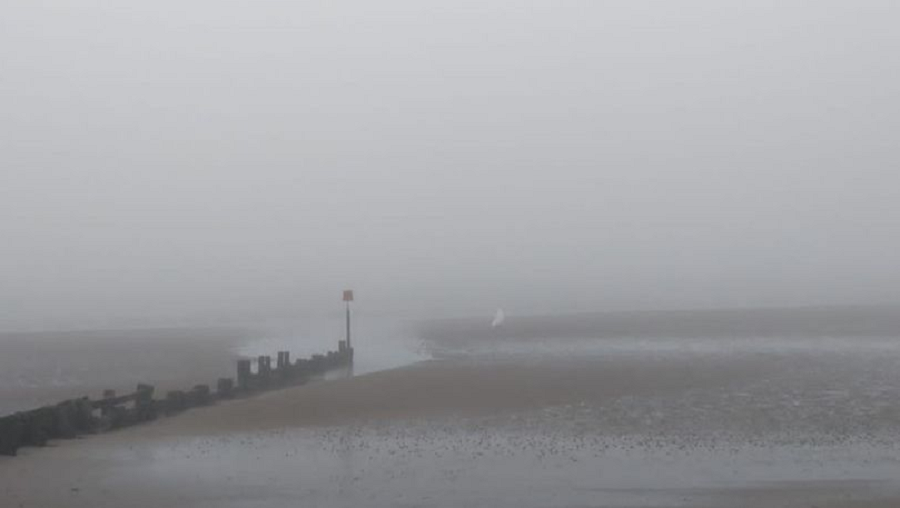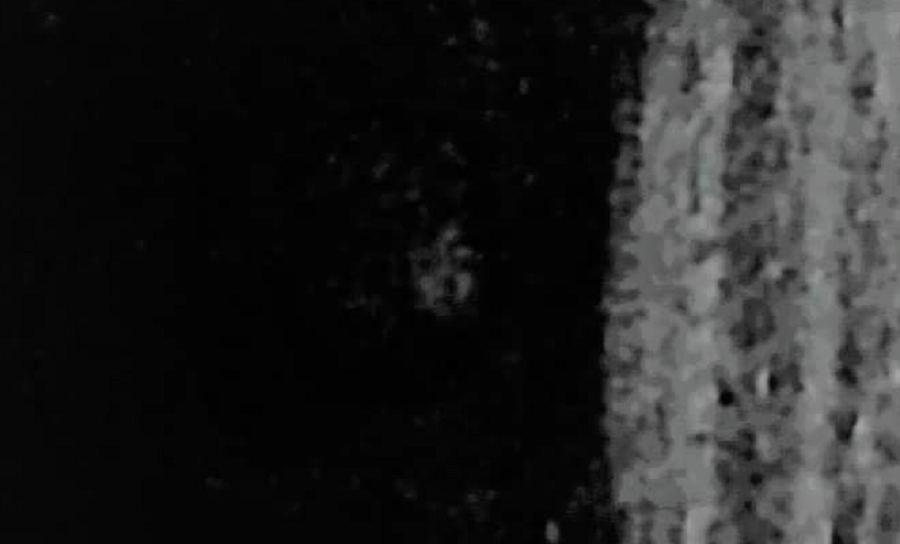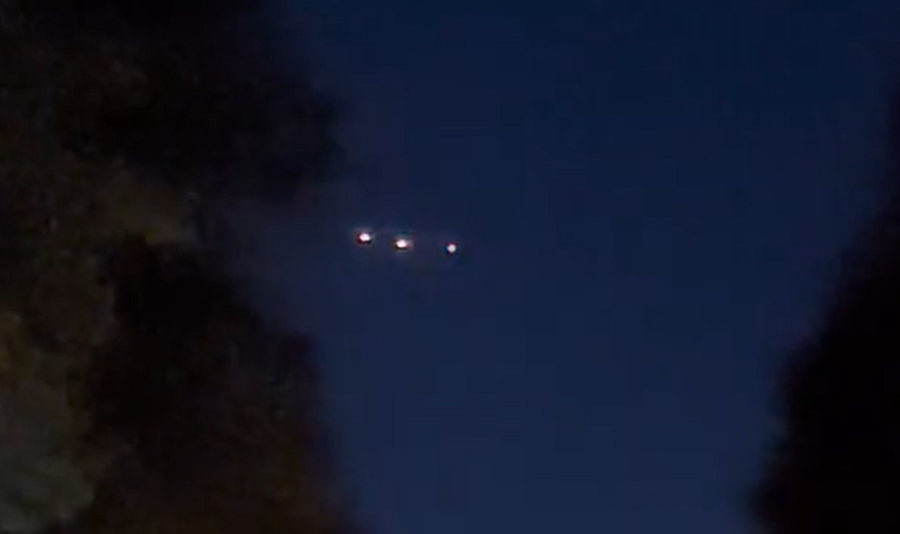Mysterious Phantom Photographed on Ghost Tour in Baltimore, Maryland
The odd image can be seen in the third window from the left on the top row. (Nicole and Joseph Henry / Facebook)
Two attendees of a Baltimore Ghost Tours pub crawl were surprised earlier this month when they realized a photograph taken of the reputedly haunted Bertha’s Mussels in Fell’s Point might have captured evidence of paranormal activity.
An enlargement of the photograph.
The photo was taken October 19th along Lancaster Street, between 7 pm and 9 pm. Joseph and Nicole Henry, a married couple from Annapolis, were leaving Bertha's—one of the first bars on the tour's crawl—when Joseph decided to take a photograph of the building.
According to the couple, the windows were all dark when he took the picture.
“I remember saying, What is that blue light? Is that a hand?” Nicole told Baltimore CBS affiliate WJZ. “We were like, oh my God.”
They showed the photograph to their tour guide, Cliff, who agreed it was unusual and advised them to share it.
The photograph was sent to Baltimore Ghost Tours, who posted it to their Facebook page.
“People email us ghost photos all the time, but I’ve never seen anything like this,” said Melissa Rowell, co-owner of Baltimore Ghost Tours. Rowell operates the tour with her business partner, Amy Lynwander, with whom she co-wrote Baltimore’s Harbor Haunts: True Baltimore Ghost Stories.
According to Rowell, most of the photographs taken on their tour are of “orbs,” a controversial phenomenon that many believe is caused by light reflecting off of dust or insects, rather than anything paranormal.
“I’ve never seen anything that looks like the human form,” she added.
She showed the photograph to Lynwander, who suspected it might have been photoshopped, although Cliff confirmed that the couple showed him the photo only moments after it had been taken—well before any manipulation could have taken place.
Rowell said that staff at Bertha’s are so afraid of paranormal activity on the second floor that they won’t go up there alone.
One staffer even reportedly opened a storage closet only to find a little girl, around the age of 8, dressed in a frilly, white dress from the 18th or 19th century and standing in a patch of moonlight. The girl is said to have looked at him, surprised, before vanishing.
Rowell said the little girl hasn’t been identified, but might have lived there in the 18th or 19th century, when Fells Point was severely overcrowded, which meant diseases like yellow fever could spread quickly and ran rampant through the community, killing hundreds of people—including many children. In 1793, 5,000 people in Baltimore succumbed to yellow fever; a full ten percent of the city's population at the time.
Andy Norris, Bertha's owner, said anyone who has spent time in the building has experienced something paranormal.
“There are definitely things that make the hair on the back of your neck stand up from time to time,” Norris said. “I don’t let it freak me out too much, I’m a bit a skeptic.”
The Singular Fortean Society’s photo analyst, Emily Wayland, isn’t so sure that the image is paranormal.
"That looks like something happening on the lens," she said. "I suspect there was some light source in the room, say from someone watching a television in the dark, and that is reflecting off the glass of the camera lens. Funny enough this effect is called 'lens ghosting.'"
"Watching television in the dark, or a similarly intermittent light source, could explain why they thought all of the windows were dark at first, too, since it might only flare up at certain moments," she added.
Lens ghosting makes the image easy for some to write off as pareidolia—the tendency to perceive a specific, often meaningful image in a random or ambiguous visual pattern.
Pareidolia, however, explains only the how of an anomalous image, not the why, according to the Singular Fortean Society’s lead investigator, Tobias Wayland
“What if pareidolia is simply one of the means through which paranormal entities communicate?” asked Tobias.
“Imagine ‘spiritual’ beings that exist on the level of human consciousness, and what they might need to do to communicate with us,” he continued. “Sure, they could ‘speak’ to us directly through dreams or visions, but how would they make a visible, physical appearance? Maybe human consciousness interacts with the paranormal in such a way that sometimes the end result is physical reality acting in accordance with our expectations regarding paranormal events, and maybe that explains the pareidolic images associated with certain phenomena—like ghosts, cryptids, or religious images.”
“In essence, we’re directed by paranormal phenomena to interpret carefully constructed—but seemingly random—stimuli in a way that allows us to ‘see’ a physical representation of something that is only psychically present,” said Tobias.
“Although it could be imagination and wishful thinking, too, in some cases,” he added. “Maybe even in this case. The real challenge is discerning between these possibilities.”
To report your own encounter with the impossible, reach out to us directly at the Singular Fortean Society through our contact page.
If you enjoyed this article and would like to support the Singular Fortean Society, please consider becoming an official member by signing up through our Patreon page—membership includes a ton of extra content and behind-the-scenes access to the Society’s inner workings.




